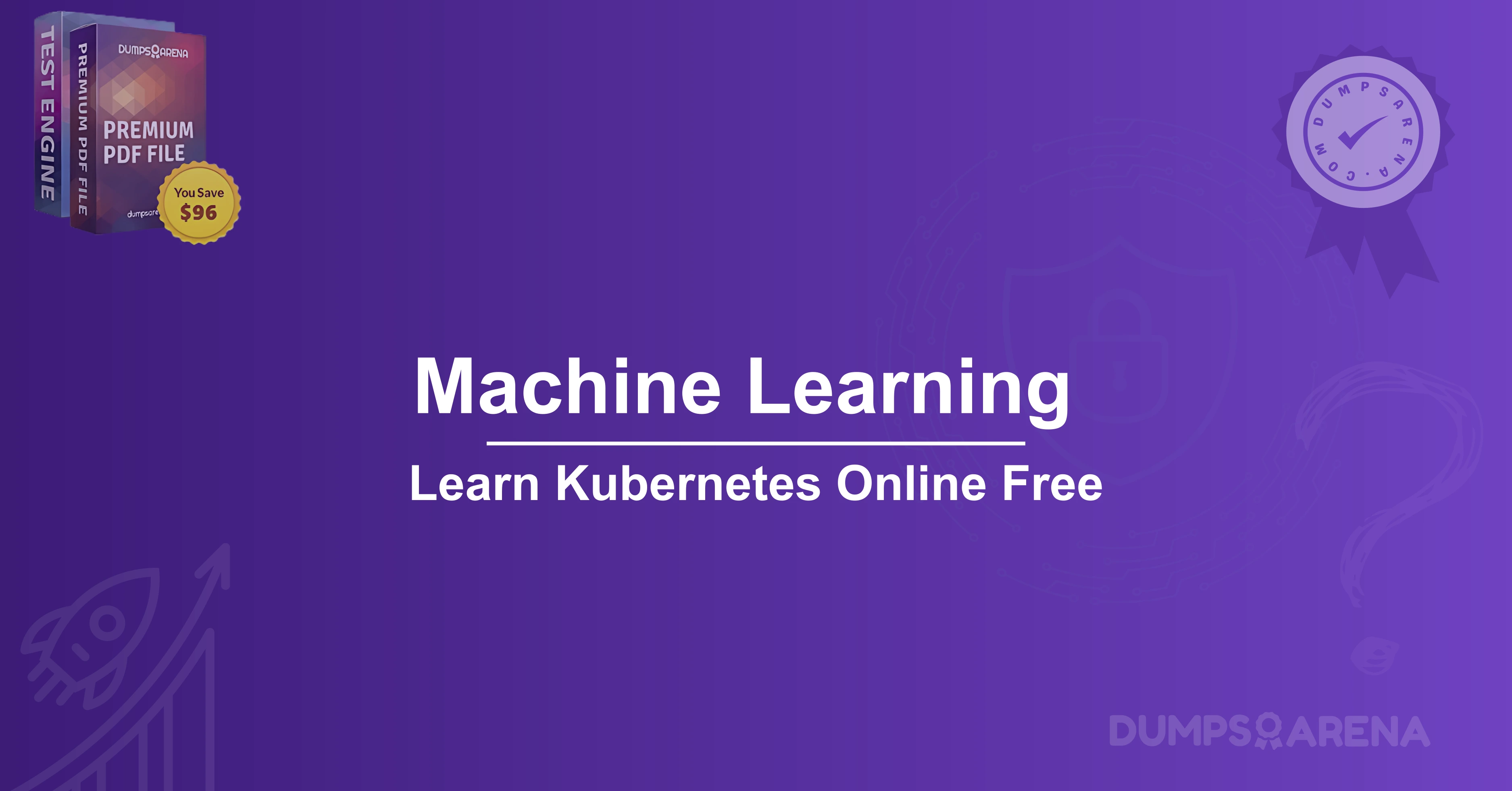Introduction
Machine Learning (ML) has revolutionized industries by enabling data-driven decision-making, automation, and predictive analytics. However, deploying and managing ML models at scale can be complex. Kubernetes, an open-source container orchestration platform, provides a robust solution for running ML workloads efficiently.
In this comprehensive guide, we will explore how to leverage Kubernetes for Machine Learning, covering key concepts, deployment strategies, and best practices—all available to read online for free. Additionally, for those preparing for certifications or looking for structured learning materials, DumpsArena offers valuable resources to enhance your expertise.
Why Run Machine Learning on Kubernetes?
1. Scalability
Kubernetes allows ML workloads to scale dynamically based on demand. Whether training large models or serving predictions, Kubernetes ensures optimal resource utilization.
2. Portability
With Kubernetes, ML models can run consistently across different environments—on-premises, cloud, or hybrid setups—without modification.
3. Resource Efficiency
Kubernetes optimizes GPU and CPU allocation, reducing costs while improving performance for ML tasks.
4. Fault Tolerance
Automated health checks, self-healing, and rolling updates ensure ML applications remain available even during failures.
5. Simplified Deployment
Kubernetes simplifies the deployment of ML pipelines, from data preprocessing to model serving, using declarative configurations.
Key Components for Machine Learning on Kubernetes
1. Kubernetes Clusters
A cluster consists of nodes (machines) that run containerized ML workloads. Managed Kubernetes services (like EKS, GKE, and AKS) simplify cluster management.
2. Containers for ML Workloads
- Docker packages ML models, dependencies, and runtime environments.
- Kubeflow extends Kubernetes for ML workflows, offering tools like Jupyter notebooks, TensorFlow, and PyTorch integration.
3. Persistent Storage
ML models require storage for datasets, checkpoints, and logs. Kubernetes supports persistent volumes (PVs) and persistent volume claims (PVCs).
4. GPU Acceleration
Kubernetes supports GPU scheduling, enabling faster training and inference for deep learning models.
5. Model Serving
- TensorFlow Serving and Seldon Core deploy ML models as microservices.
- KServe (formerly KFServing) provides serverless inference on Kubernetes.
Deploying Machine Learning Models on Kubernetes
Step 1: Setting Up a Kubernetes Cluster
- Use Minikube for local development or cloud-based clusters (EKS/GKE/AKS).
- Install kubectl to interact with the cluster.
Step 2: Containerizing ML Models
- Create a Dockerfile with Python, TensorFlow/PyTorch, and required dependencies.
- Push the container image to a registry (Docker Hub, Google Container Registry).
Step 3: Deploying with Kubernetes Manifests
- Define Deployments for model training and serving.
- Use Services to expose ML APIs internally or externally.
- Configure Ingress for routing traffic to model endpoints.
Step 4: Monitoring & Scaling
- Prometheus & Grafana track model performance.
- Horizontal Pod Autoscaler (HPA) adjusts replicas based on CPU/GPU usage.
Advantages of Using Kubernetes for ML
Cost-Effective Scaling – Pay only for resources used.
Reproducibility – Consistent environments for training and inference.
Multi-Cloud Support – Deploy models across AWS, GCP, Azure, or on-prem.
Automated Workflows – CI/CD pipelines for ML model updates.
Free Learning Resources
You can read about Machine Learning on Kubernetes online for free through official documentation, blogs, and open-source project guides. For structured exam preparation and in-depth study materials, DumpsArena provides high-quality resources to help you master Kubernetes and ML deployments.
Conclusion
Kubernetes is a game-changer for deploying and managing Machine Learning workloads at scale. By leveraging its scalability, fault tolerance, and portability, organizations can streamline ML operations and accelerate AI adoption.
For those seeking certification or deeper insights, DumpsArena offers curated study materials to help you succeed in Kubernetes and Machine Learning. Start exploring today and unlock the full potential of ML on Kubernetes!
Would you like additional details on any specific section, such as Kubeflow setup or GPU optimization? Let me know how I can enhance this guide further!




